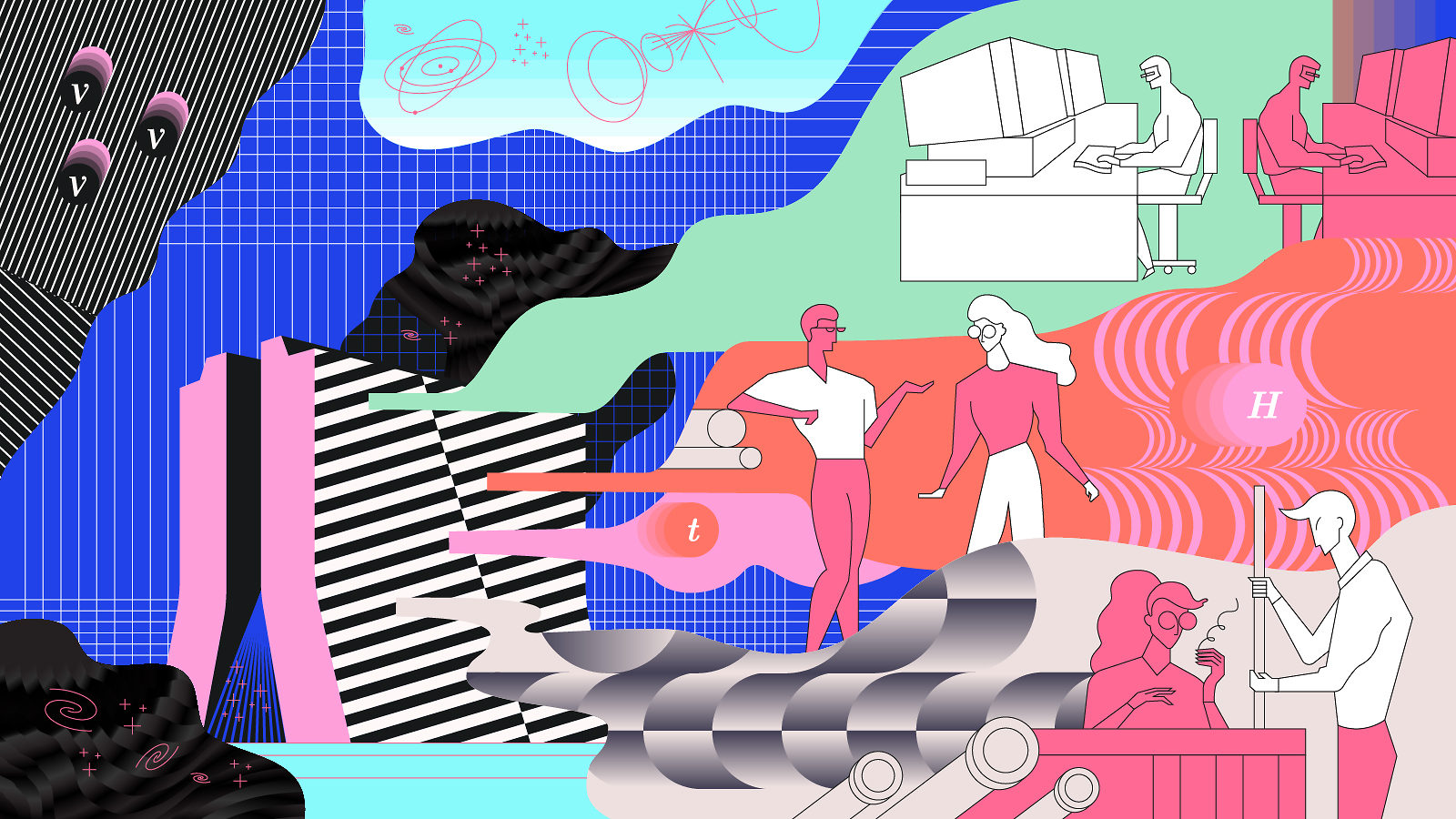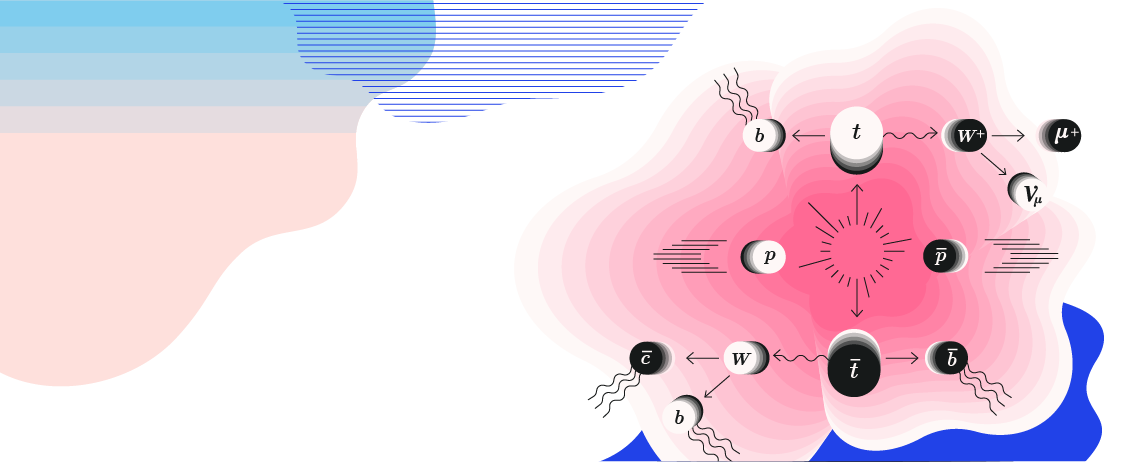Imagine how it must have felt to be Robert Wilson in the spring of 1967. The Atomic Energy Commission had hired him as the founding director of the planned National Accelerator Laboratory. Before him was the opportunity to build the most powerful particle accelerator in the world—and to create a great new American laboratory dedicated to giving scientists extraordinary new capabilities to explore the universe.
Fifty years later, we marvel at the boldness and scope of the project, and at the freedom, the leadership, the confidence and the vision that it took to conceive and build it. If anyone was up for the challenge, it was Wilson.
By the early 1960s, the science of particle physics had outgrown its birthplace in university laboratories. The accelerators and detectors for advancing research had grown too big, complex and costly for any university to build and operate alone. Particle physics required a new model: national laboratories where the resources of the federal government would bring together the intellectual, scientific, engineering, technical and management capabilities to give collaborations of scientists the ability to explore scientific questions that could no longer be addressed at individual universities.
The NAL, later renamed Fermi National Accelerator Laboratory, would be a national facility where university physicists—“users”—would be “at home and loved,” in the words of physicist Leon Lederman, who eventually succeeded Wilson as Fermilab director. The NAL would be a truly national laboratory rising from the cornfields west of Chicago, open to scientists from across the country and around the world.
The Manhattan Project in the 1940s had shown the young Wilson—had shown the entire nation—what teams of physicists and engineers could achieve when, with the federal government’s support, they devoted their energy and capability to a common goal. Now, Wilson could use his skills as an accelerator designer and builder, along with his ability to lead and inspire others, to beat the sword of his Manhattan Project experience into the plowshare of a laboratory devoted to peacetime physics research.
When the Atomic Energy Commission chose Wilson as NAL’s director, they may have been unaware that they had hired not only a gifted accelerator physicist but also a sculptor, an architect, an environmentalist, a penny-pincher (that they would have liked), an iconoclast, an advocate for human rights, a Wyoming cowboy and a visionary.
Over the dozen years of his tenure Wilson would not only oversee the construction of the world’s most powerful particle accelerator, on time and under budget, and set the stage for the next generation of accelerators. He would also shape the laboratory with a vision that included erecting a high-rise building inspired by a French cathedral, painting other buildings to look like children’s building blocks, restoring a tall-grass prairie, fostering a herd of bison, designing an 847-seat auditorium (a venue for culture in the outskirts of Chicago), and adorning the site with sculptures he created himself.
Fermilab physicist Roger Dixon tells of a student who worked for him in the lab’s early days.
“One night,” Dixon remembers, “I had Chris working overtime in a basement machine shop. He noticed someone across the way grinding and welding. When the guy tipped back his helmet to examine his work, Chris walked over and asked, ‘What’ve they got you doin’ in here tonight?’ The man said that he was working on a sculpture to go into the reflecting pond in front of the high rise. ‘Boy,’ Chris said, ‘they can think of more ways for you to waste your time around here, can’t they?’ To which Robert Wilson, welder, sculptor and laboratory director, responded with remarks Chris will never forget on the relationship of science, technology and art.”
Wilson believed a great physics laboratory should look beautiful. “It seemed to me,” he wrote, “that the conditions of its being a beautiful laboratory were the same conditions as its being a successful laboratory.”
With the passage of years, Wilson’s outsize personality and gift for eloquence have given his role in Fermilab’s genesis a near-mythic stature. In reality, of course, he had help. He used his genius for bringing together the right people with the right skills and knowledge at the right time to recruit and inspire scientists, engineers, technicians, administrators (and an artist) not only to build the laboratory but also to stick around and operate it. Later, these Fermilab pioneers recalled the laboratory’s early days as a golden age, when they worked all hours of the day and night and everyone felt like family.
By 1972, the Main Ring of the laboratory’s accelerator complex was sending protons to the first university users, and experiments proliferated in the laboratory’s particle beams. In July 1977, Experiment E-288, a collaboration Lederman led, discovered the bottom quark.
Physicist Patty McBride, who heads Fermilab’s Particle Physics Division, came to Fermilab in 1979 as a Yale graduate student. McBride’s most vivid memory of her early days at the laboratory is meeting people with a wide variety of life experiences.
“True, there were almost no women,” she says. “But out in this lab on the prairie were people from far more diverse backgrounds than I had ever encountered before. Some, including many of the skilled technicians, had returned from serving in the Vietnam War. Most of the administrative staff were at least bilingual. We always had Russian colleagues; in fact the first Fermilab experiment, E-36, at the height of the Cold War, was a collaboration between Russian and American physicists. I worked with a couple of guest scientists who came to Fermilab from China. They were part of a group who were preparing to build a new accelerator at the Institute of High Energy Physics there.”
The diversity McBride found was another manifestation of Wilson’s concept of a great laboratory.
“Prejudice has no place in the pursuit of knowledge,” he wrote. “In any conflict between technical expediency and human rights, we shall stand firmly on the side of human rights. Our support of the rights of the members of minority groups in our laboratory and its environs is inextricably intertwined with our goal of creating a new center of technical and scientific excellence.”
Designing the future
Advances in particle physics depend on parallel advances in accelerator technology. Part of an accelerator laboratory’s charge is to develop better accelerators—at least that’s how Wilson saw it. With the Main Ring delivering beam, it was time to turn to the next challenge. This time, he had a working laboratory to help.
The designers of Fermilab’s first accelerator had hoped to use superconducting magnets for the Main Ring, but they soon realized that in 1967 it was not yet technically feasible. Nevertheless, they left room in the Main Ring tunnel for a next-generation accelerator.
Wilson applied his teambuilding gifts to developing this new machine, christened the Energy Doubler (and later renamed the Tevatron).
In 1972, he brought together an informal working group of metallurgists, magnet builders, materials scientists, physicists and engineers to begin investigating superconductivity, with the goal of putting this exotic phenomenon to work in accelerator magnets.
No one had more to do with the success of the superconducting magnets than Fermilab physicist Alvin Tollestrup. Times were different then, he recalls.
“Bob had scraped up enough money from here and there to get started on pursuing the Doubler before it was officially approved,” Tollestrup says. “We had to fight tooth and nail for approval. But in those days, Bob could point the whole machine shop to do what we needed. They could build a model magnet in a week.”
It took a decade of strenuous effort to develop the superconducting wire, the cable configuration, the magnet design and the manufacturing processes to bring the world’s first large-scale superconducting accelerator magnets into production, establishing Fermilab’s leadership in accelerator technology. Those involved say they remember it as an exhilarating experience.
By March 1983, the Tevatron magnets were installed underneath the Main Ring, and in July the proton beam in the Tevatron reached a world-record energy of 512 billion electronvolts. In 1985, a new Antiproton Source enabled proton-antiproton collisions that further expanded the horizons of the subatomic world.
Two particle detectors—called the Collider Detector at Fermilab, or CDF, and DZero—gave hundreds of collaborating physicists the means to explore this new scientific territory. Design for CDF began in 1978, construction in 1982, and CDF physicists detected particle collisions in 1985. Fermilab’s current director, Nigel Lockyer, first came to work at Fermilab on CDF in 1984.
“The sheer ambition of the CDF detector was enough to keep everyone excited,” he says.
The DZero detector came online in 1992. A primary goal for both experiments was the discovery of the top quark, the heavier partner of the bottom quark and the last undiscovered quark of the six that theory predicted. Both collaborations worked feverishly to be the first to accumulate enough evidence for a discovery.
In March 1995, CDF and DZero jointly announced that they had found the top. To spread the news, Fermilab communicators tried out a fledgling new medium called the World Wide Web.
Five decades of particle physics
Reaching new frontiers
Meanwhile, in the 1980s, growing recognition of the links between subatomic interactions and cosmology—between the inner space of particle physics and the outer space of astrophysics—led to the formation of the Fermilab Theoretical Astrophysics Group, pioneered by cosmologists Rocky Kolb and Michael Turner. Cosmology’s rapid evolution from theoretical endeavor to experimental science demanded large collaborations and instruments of increasing complexity and scale, beyond the resources of universities—a problem that particle physics knew how to solve.
In the mid-1990s, the Sloan Digital Sky Survey turned to Fermilab for help. Under the leadership of former Fermilab Director John Peoples, who became SDSS director in 1998, the Sky Survey carried out the largest astronomical survey ever conducted and transformed the science of astrophysics.
The discovery of cosmological evidence of dark matter and dark energy had profound implications for particle physics, revealing a mysterious new layer to the universe and raising critical scientific questions. What are the particles of dark matter? What is dark energy? In 2004, in recognition of Fermilab’s role in particle astrophysics, the laboratory established the Center for Particle Astrophysics.
As the twentieth century ended and the twenty-first began, Fermilab’s Tevatron experiments defined the frontier of high-energy physics research. Theory had long predicted the existence of a heavy particle associated with particle mass, the Higgs boson, but no one had yet seen it. In the quest for the Higgs, Fermilab scientists and experimenters made a relentless effort to wring every ounce of performance from accelerator and detectors.
The Tevatron had reached maximum energy, but in 1999 a new accelerator in the Fermilab complex, the Main Injector, began giving an additional boost to particles before they entered the Tevatron ring, significantly increasing the rate of particle collisions. The experiments continuously re-invented themselves using advances in detector and computing technology to squeeze out every last drop of data. They were under pressure, because the clock was ticking.
A new accelerator with seven times the Tevatron’s energy was under construction at CERN, the European laboratory for particle physics in Geneva, Switzerland. When Large Hadron Collider operations began, its higher-energy collisions and state-of-the-art detectors would eclipse Fermilab’s experiments and mark the end of the Tevatron’s long run.
In the early 1990s, the Tevatron had survived what many viewed as a near-death experience with the cancellation of the Superconducting Super Collider, planned as a 26-mile ring that would surpass Fermilab’s accelerator, generating beams with 20 times as much energy. Construction began on the SSC’s Texas site in 1991, but in 1993 Congress canceled funding for the multibillion-dollar project. Its demise meant that, for the time being, the high-energy frontier would remain in Illinois.
While the SSC drama unfolded, in Geneva the construction of the LHC went steadily onward—helped and supported by US physicists and engineers and by US funding.
Among the more puzzling aspects of particle physics for those outside the field is the simultaneous competition and collaboration of scientists and laboratories. It makes perfect sense to physicists, however, because science is the goal. The pursuit of discovery drives the advancement of technology. Particle physicists have decades of experience in working collaboratively to develop the tools for the next generation of experiments, wherever in the world that takes them.
Thus, even as the Tevatron experiments threw everything they had into the search for the Higgs, scientists and engineers at Fermilab—literally across the street from the CDF detector—were building advanced components for the CERN accelerator that would ultimately shut the Tevatron down.
Going global
Just as in the 1960s particle accelerators had outgrown the resources of any university, by the end of the century they had outgrown the resources of any one country to build and operate. Detectors had long been international construction projects; now accelerators were, too, as attested by the superconducting magnets accumulating at Fermilab, ready for shipment to Switzerland.
As the US host for CERN’s CMS experiment, Fermilab built an LHC Remote Operations Center so that the growing number of US collaborating physicists could work on the experiment remotely. In the early morning hours of September 10, 2008, a crowd of observers watched on screens in the ROC as the first particle beam circulated in the LHC. Four years later, the CMS and ATLAS experiments announced the discovery of the Higgs boson. One era had ended, and a new one had begun.
The future of twenty-first century particle physics, and Fermilab’s future, will unfold in a completely global context. More than half of US particle physicists carry out their research at LHC experiments. Now, the same model of international collaboration will create another pathway to discovery, through the physics of neutrinos. Fermilab is hosting the international Deep Underground Neutrino Experiment, powered by the Long-Baseline Neutrino Facility that will send the world’s most powerful beam of neutrinos through the earth to a detector more than a kilometer underground and 1300 kilometers away in the Sanford Underground Research Facility in South Dakota.
“We are following the CERN model,” Lockyer says. “We have split the DUNE project into an accelerator facility and an experiment. Seventy-five percent of the facility will be built by the US, and 25 percent by international collaborators. For the experiment, the percentages will be reversed.”
The DUNE collaboration now comprises more than 950 scientists from 162 institutions in 30 countries. “To design the project,” Lockyer says, “we started with a clean piece of paper and all of our international collaborators and their funding agencies in the room. They have been involved since t=0.”
In Lockyer’s model for Fermilab, the laboratory will keep its historic academic focus, giving scientists the tools to address the most compelling scientific questions. He envisions a diverse science portfolio with a flagship neutrino program and layers of smaller programs, including particle astrophysics.
At the same time, he says, Fermilab feels mounting pressure to demonstrate value beyond creating knowledge. One potential additional pursuit involves using the laboratory’s unequaled capability in accelerator design and construction to build accelerators for other laboratories. Lockyer says he also sees opportunities to contribute the computing capabilities developed from decades of processing massive amounts of particle physics data to groundbreaking next-generation computing projects. “We have to dig deeper and reach out in new ways.”
In the five decades since Fermilab began, knowledge of the universe has flowered beyond anything we could have imagined in 1967. Particles and forces then unknown have become familiar, like old friends. Whole realms of inner space have opened up to us, and outer space has revealed a new dark universe to explore. Across the globe, collaborators have joined forces to extend our reach into the unknown beyond anything we can achieve separately.
Times have changed, but Wilson would still recognize his laboratory. As it did then, Fermilab holds the same deep commitment to the science of the universe that brought it into being 50 years ago.

















